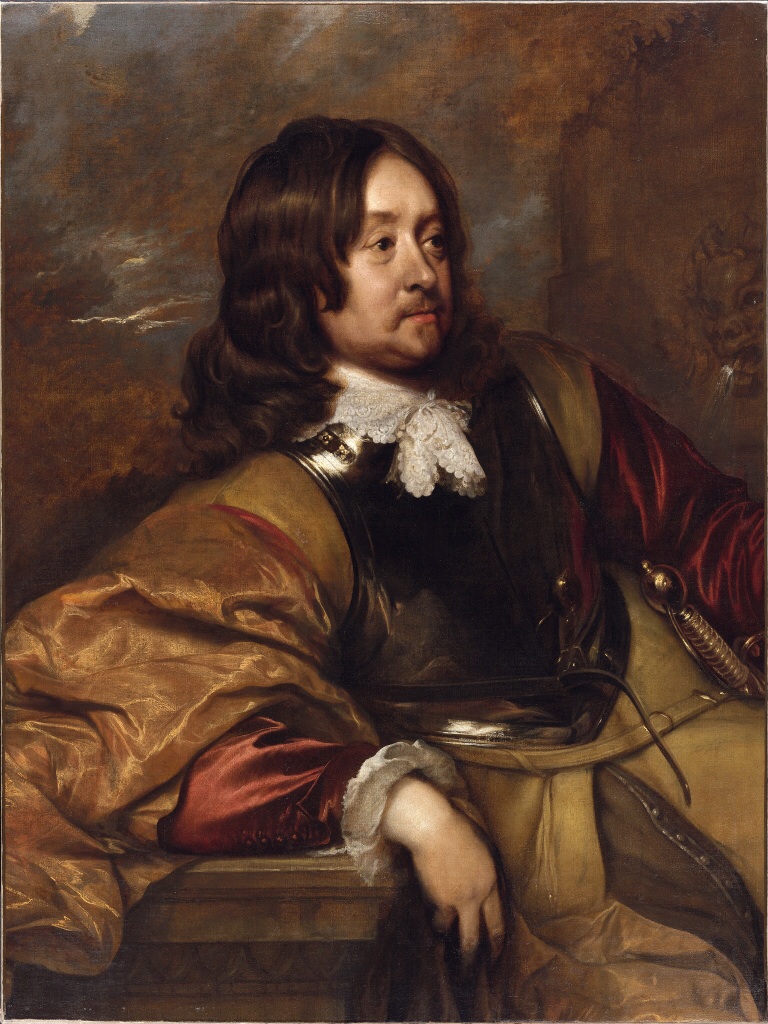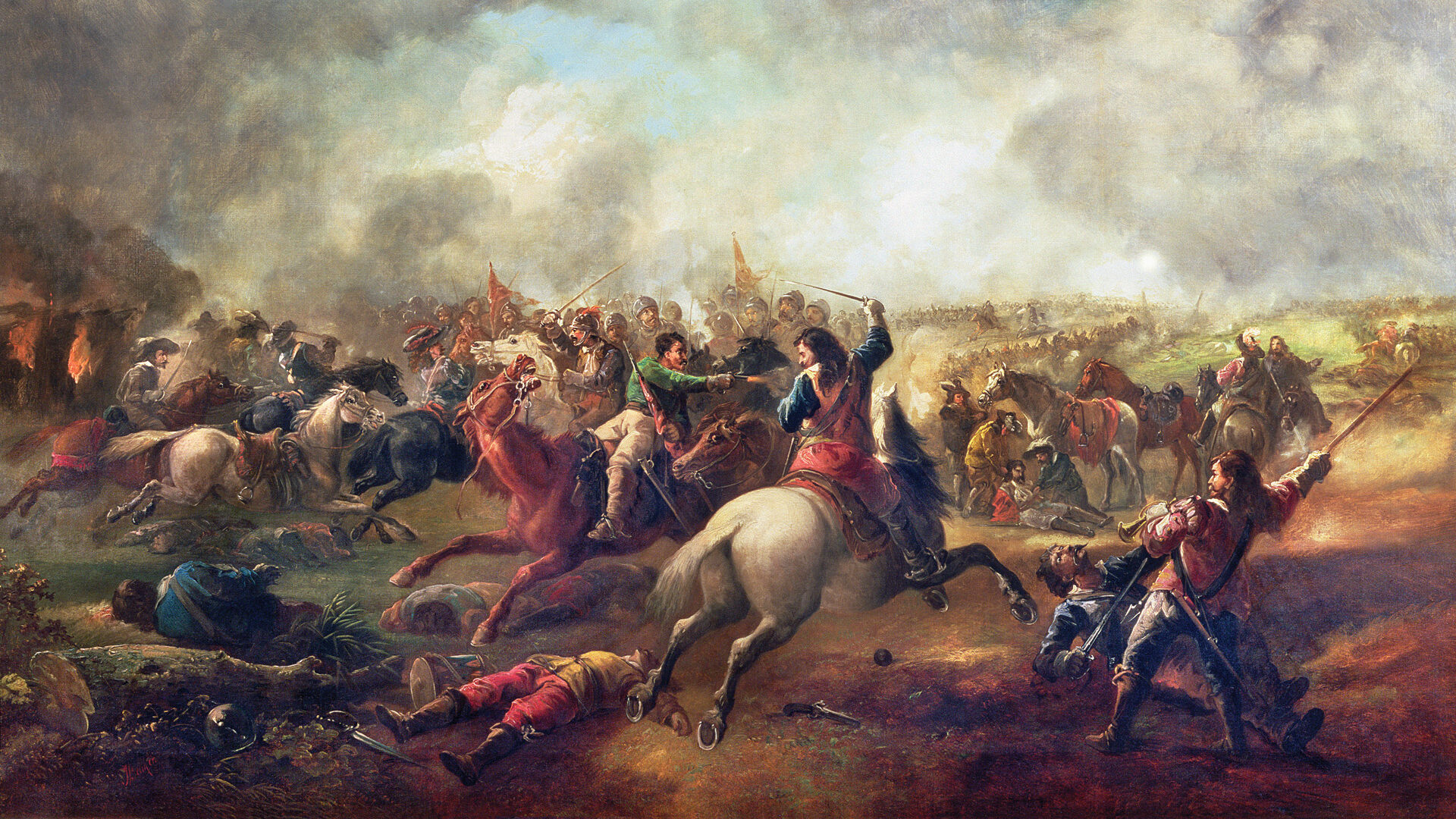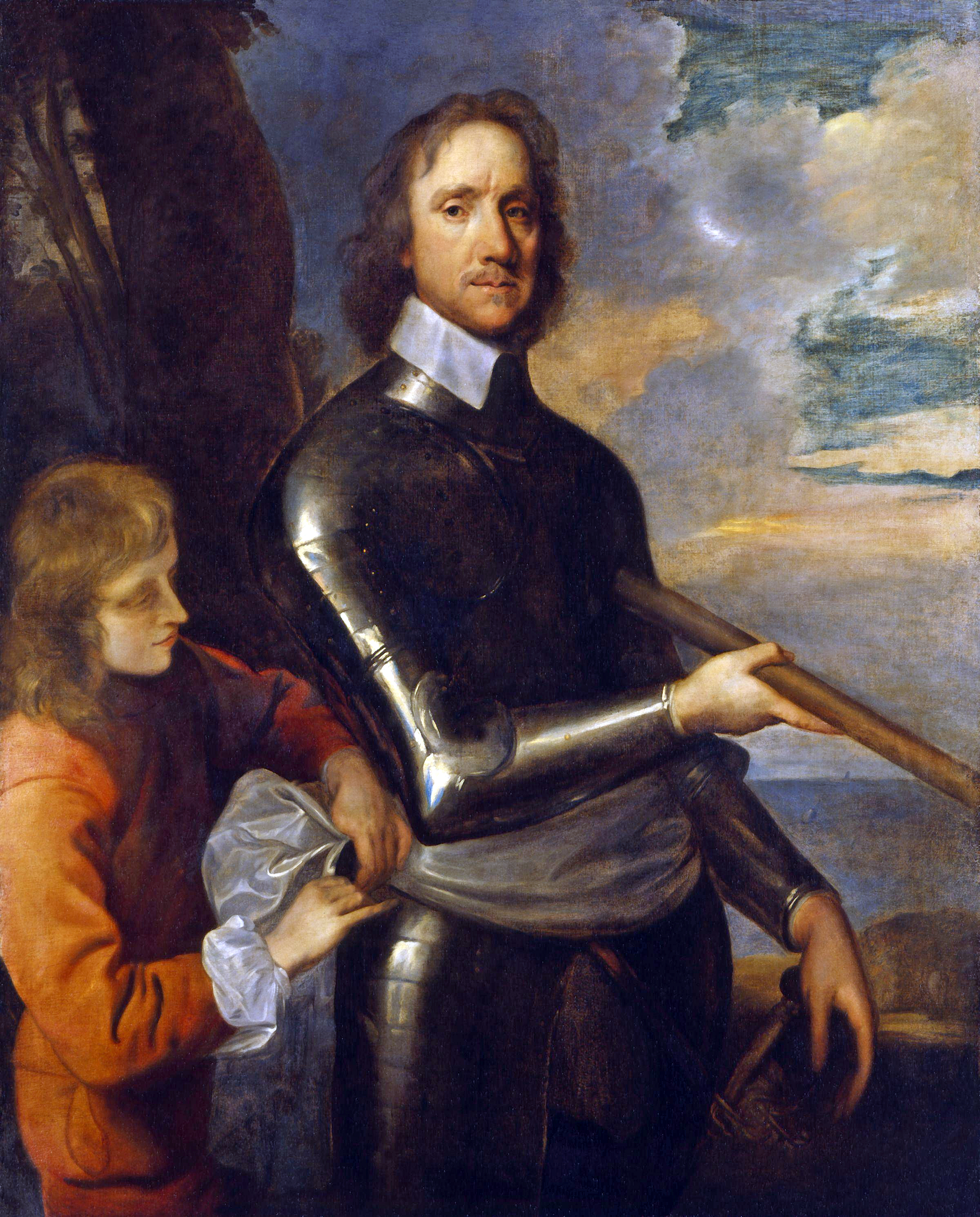|
Battle Of Turnham Green
The Battle of Turnham Green took place on 13 November 1642 near the village of Turnham Green, at the end of the first campaigning season of the First English Civil War. The battle resulted in a standoff between the forces of King Charles I and the much larger Parliamentarian army under the command of the Earl of Essex. In blocking the Royalist army's way to London immediately, however, the Parliamentarians gained an important strategic victory as the standoff forced Charles and his army to retreat to Oxford for secure winter quarters. Prelude After the Battle of Edgehill, King Charles captured Banbury and was greeted by cheering crowds as he arrived in Oxford on 29 October. Charles' nephew and cavalry commander, Prince Rupert of the Rhine, swept down the Thames Valley, capturing Abingdon, Aylesbury and Maidenhead, from where he attempted, unsuccessfully, to capture Windsor from strong Parliamentary forces. After this, many officers wanted to open peace negotiations, cont ... [...More Info...] [...Related Items...] OR: [Wikipedia] [Google] [Baidu] |
First English Civil War
The First English Civil War took place in England and Wales from 1642 to 1646, and forms part of the 1639 to 1653 Wars of the Three Kingdoms. An estimated 15% to 20% of adult males in England and Wales served in the military at some point between 1639 and 1653, while around 4% of the total population died from war-related causes. These figures illustrate the widespread impact of the conflict on society, and the bitterness it engendered as a result. Conflict over the role of Parliament and religious practice dated from the accession of James VI and I in 1603. These tensions culminated in the imposition of Personal Rule in 1629 by his son, Charles I, who recalled Parliament in April and November 1640. He hoped by doing so to obtain funding that would enable him to reverse his defeat by Scots Covenanters in the Bishops' Wars, but in return Parliament demanded a greater share in government than he was willing to concede. In its early stages, the vast majority on both sides s ... [...More Info...] [...Related Items...] OR: [Wikipedia] [Google] [Baidu] |
Windsor, Berkshire
Windsor is a historic town in the Royal Borough of Windsor and Maidenhead in Berkshire, England. It is the site of Windsor Castle, one of the official residences of the Monarchy of the United Kingdom, British monarch. The town is situated west of Charing Cross, central London, southeast of Maidenhead, and east of the modern county town of Reading, Berkshire, Reading. It is immediately south of the River Thames, which forms its boundary with its smaller, ancient twin town of Eton, Berkshire, Eton. The village of Old Windsor, just over to the south, predates what is now called Windsor by around 300 years. In the past, Windsor was formally referred to as New Windsor to distinguish the two. Etymology ''Windlesora'' is first mentioned in the ''Anglo-Saxon Chronicle.'' (The settlement had an earlier name but this is unknown.) The name originates from old English ''Windles-ore'' or ''winch by the riverside''.South S.R., ''The Book of Windsor'', Barracuda Books, 1977. This etymol ... [...More Info...] [...Related Items...] OR: [Wikipedia] [Google] [Baidu] |
Turnham Green Station
Turnham Green () is a London Underground station in Chiswick of the London Borough of Hounslow, west London. The station is served by the District and Piccadilly lines in a manner of cross-platform interchange although Piccadilly line trains normally stop at the station only at the beginning and end of the day, running through non-stop at other times. To the east, District line trains stop at and Piccadilly line trains stop at . To the west, District line trains run to either or and Piccadilly line trains stop at . The station is in both Travelcard Zone 2 and Zone 3. The station is located on Turnham Green Terrace (B491) on the eastern edge of Chiswick Common. It is about north of Chiswick High Road ( A315), and as well as Central Chiswick the station serves the Bedford Park area. The actual Turnham Green park is much closer to Chiswick Park station. History The station is located close to the site of the Battle of Turnham Green (1642), during the First English Civil Wa ... [...More Info...] [...Related Items...] OR: [Wikipedia] [Google] [Baidu] |
Battlefields Trust
A battlefield, battleground, or field of battle is the location of a present or historic battle involving ground warfare. It is commonly understood to be limited to the point of contact between opposing forces, though battles may involve troops covering broad geographic areas. Although the term implies that battles are typically fought in a field – an open stretch of level ground – it applies to any type of terrain on which a battle is fought. The term can also have legal significance, and battlefields may have substantial historical and cultural value—the battlefield has been described as "a place where ideals and loyalties are put to the test".Veronica Fiorato, Anthea Boylston, Christopher Knüsel, ''Blood Red Roses: The Archaeology of a Mass Grave from the Battle of Towton AD 1461'' (2007), p. 3. Various acts and treaties restrict certain belligerent conduct to an identified battlefield. Other legal regimes promote the preservation of certain battlefields as sites of ... [...More Info...] [...Related Items...] OR: [Wikipedia] [Google] [Baidu] |
Acton Green, London
Acton Green is a residential neighbourhood in Chiswick and the London Borough of Ealing, in West London, England. It is named for the nearby Acton Green common. It was once home to many small laundries and was accordingly known as "Soapsuds Island". History The public parkland of Acton Green common adjoins Chiswick Back Common; before they were divided by the railway embankment for the District and Piccadilly lines, both were part of the English Civil War battlefield of the Battle of Turnham Green. South Acton, especially the Acton Green district, was once famous for its laundries, and was known as "Soapsuds island". There were some 60 laundries in 1873, rising to over 170 in 1890, most of the washing being done by hand. The 1901 census recorded as laundry workers 568 men and 2,448 women. The number of laundries fell to 50 in 1956, by then all automated: still the largest concentration of such businesses in Britain at that time. The business supported light industries that ... [...More Info...] [...Related Items...] OR: [Wikipedia] [Google] [Baidu] |
Chiswick
Chiswick ( ) is a district in West London, split between the London Borough of Hounslow, London Boroughs of Hounslow and London Borough of Ealing, Ealing. It contains Hogarth's House, the former residence of the 18th-century English artist William Hogarth, Chiswick House, a neo-Palladian villa regarded as one of the finest in England and Fuller's Brewery, London's largest and oldest brewery. In a meander of the River Thames used for competitive and recreational rowing, with several rowing clubs on the river bank, the finishing post for the Boat Race is just downstream of Chiswick Bridge. Old Chiswick was an St Nicholas Church, Chiswick, ancient parish in the county of Middlesex, with an agrarian and fishing economy beside the river; from the Early Modern period, the wealthy built imposing riverside houses on Chiswick Mall. Having good communications with London, Chiswick became a popular country retreat and part of the suburban growth of London in the late 19th and early 20th ... [...More Info...] [...Related Items...] OR: [Wikipedia] [Google] [Baidu] |
Napoleon
Napoleon Bonaparte (born Napoleone di Buonaparte; 15 August 1769 – 5 May 1821), later known by his regnal name Napoleon I, was a French general and statesman who rose to prominence during the French Revolution and led Military career of Napoleon, a series of military campaigns across Europe during the French Revolutionary and Napoleonic Wars from 1796 to 1815. He led the French First Republic, French Republic as French Consulate, First Consul from 1799 to 1804, then ruled the First French Empire, French Empire as Emperor of the French from 1804 to 1814, and briefly again in 1815. He was King of Italy, King of Kingdom of Italy (Napoleonic), Italy from 1805 to 1814 and Protector of the Confederation of the Rhine, Protector of the Confederation of the Rhine from 1806 to 1813. Born on the island of Corsica to a family of Italian origin, Napoleon moved to mainland France in 1779 and was commissioned as an officer in the French Royal Army in 1785. He supported the French Rev ... [...More Info...] [...Related Items...] OR: [Wikipedia] [Google] [Baidu] |
Battle Of Worcester
The Battle of Worcester took place on 3 September 1651 in and around the city of Worcester, England and was the last major battle of the 1642 to 1651 Wars of the Three Kingdoms. A Parliamentarian army of around 28,000 under Oliver Cromwell defeated a largely Scottish Royalist force of 16,000 led by Charles II of England and Scotland. The Royalists took up defensive positions in and around the city of Worcester. The area of the battle was bisected by the River Severn, with the River Teme forming an additional obstacle to the south-west of Worcester. Cromwell divided his army into two main sections, divided by the Severn, in order to attack from both the east and south-west. There was fierce fighting at river crossing points and two dangerous sorties by the Royalists against the eastern Parliamentary force were beaten back. Following the storming of a major redoubt to the east of the city, the Parliamentarians entered Worcester and organised Royalist resistance collapsed. Charl ... [...More Info...] [...Related Items...] OR: [Wikipedia] [Google] [Baidu] |
Kingston Upon Thames
Kingston upon Thames, colloquially known as Kingston, is a town in the Royal Borough of Kingston upon Thames, south-west London, England. It is situated on the River Thames, south-west of Charing Cross. It is an ancient market town, notable as the place where some History of Anglo-Saxon England, Saxon kings were crowned. Historic counties of England, Historically in the county of Surrey, the ancient Kingston upon Thames (parish), parish of Kingston covered both the town itself and a large surrounding area. The town was an ancient borough, having been formally incorporated in 1441, with a long history prior to that as a royal manor. From 1836 until 1965 the town formed the Municipal Borough of Kingston-upon-Thames. From 1893 to 2020 Kingston was the seat of Surrey County Council. The town became part of Greater London in 1965, when the modern borough was also created as one of the 32 London boroughs. Kingston is identified as a metropolitan centre in the London Plan and is one o ... [...More Info...] [...Related Items...] OR: [Wikipedia] [Google] [Baidu] |
Acton, London
Acton () is a town in West London, England, within the London Borough of Ealing. It is west of Charing Cross. At the United Kingdom Census 2011, 2011 census, its four Wards of the United Kingdom, wards, East Acton, Acton Central, South Acton and Southfield, had a population of 62,480, a ten-year increase of 8,791 people."Key Statistics; Quick Statistics: Population Density" . ''United Kingdom Census 2011''. Office for National Statistics. Retrieved 31 October 2014. North Acton, West Acton, East Acton, South Acton, London, South Acton, Acton Green, London, Acton Green, Acton Town, Acton Vale, London, Acton Vale and Acton Central are all parts of Acton. Acton means "oak farm" or "farm by oak trees", and is derived from the Old English ''āc'' (oak) and ''tūn'' (farm). [...More Info...] [...Related Items...] OR: [Wikipedia] [Google] [Baidu] |
John Hampden
John Hampden (24 June 1643) was an English politician from Oxfordshire, who was killed fighting for Roundhead, Parliament in the First English Civil War. An ally of Parliamentarian leader John Pym, and a cousin of Oliver Cromwell, he was one of the Five Members whom Charles I of England tried to arrest in January 1642, a significant step in the outbreak of fighting in August. All five are commemorated at the State Opening of Parliament each year. When the war began in August 1642, Hampden raised an infantry regiment for the Parliamentarian cause. His death on 18 June 1643 after being wounded in the Battle of Chalgrove Field was considered a significant loss, largely because Hampden acted as a bridge between the different Parliamentarian factions. His early death meant Hampden avoided the ideological splits that led to the execution of Charles I in January 1649, and establishment of the Commonwealth of England. Combined with a reputation for honest, principled, and patriotic oppo ... [...More Info...] [...Related Items...] OR: [Wikipedia] [Google] [Baidu] |








